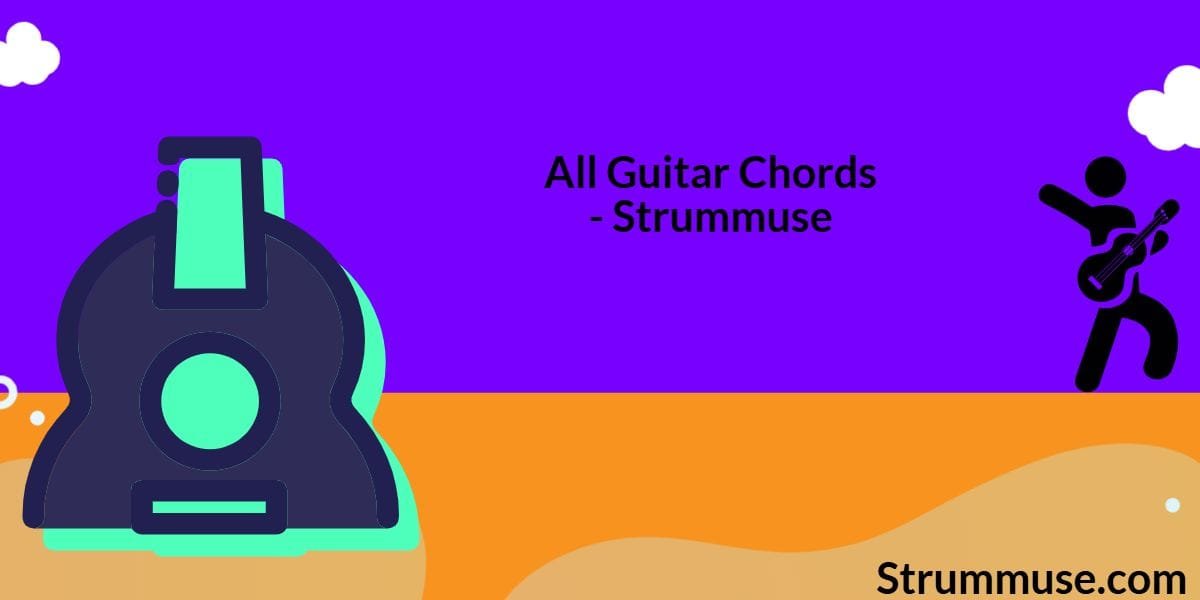Table of Contents
Whether you’re just starting out or looking to sharpen your skills, understanding all guitar chords is essential to becoming a confident player. In this ultimate guide, we’ll break down every major chord category, give you easy-to-read charts, and help you apply them musically.
What Are Guitar Chords?
A guitar chord is a group of notes played simultaneously to create harmony. Most chords are formed by pressing strings down on specific frets and strumming either all or some strings.
There are thousands of chords, but the good news? You only need to learn a few to start playing your favorite songs.
Types of Guitar Chords
1. Open Chords
Open chords use open strings (unfretted) and are great for beginners.
Most common open chords:
- C Major
- A Major
- G Major
- E Major
- D Major
- A Minor
- E Minor
- D Minor
✅ Pro Tip: Master open chords before jumping into barre chords.
2. Barre Chords
These use one finger to “bar” across the fretboard. They’re movable shapes—once you know one, you can slide it anywhere.
Popular barre chord shapes:
- E-shape major barre (e.g. F, G, A)
- A-shape major barre
- Minor barre chords (E minor shape)
3. Power Chords (5 Chords)
Power chords are simple two-note shapes used in rock, punk, and metal.
Examples:
- E5, A5, D5
- Shape: Root + Fifth (e.g. 1st and 5th fret notes)
🎸 Used in: Green Day, Nirvana, Blink-182
4. Major and Minor Chords
These are your basic happy and sad chords. They’re triads (3 notes).
Major chords = Root + Major 3rd + 5th
Minor chords = Root + Minor 3rd + 5th
Example:
- C Major: C–E–G
- A Minor: A–C–E
5. Seventh Chords
Seventh chords add a jazzy, bluesy flavor.
Types:
- Dominant 7 (C7)
- Major 7 (Cmaj7)
- Minor 7 (Cm7)
Why learn them? They show up in blues, soul, funk, jazz, and even pop.
6. Suspended Chords (Sus2, Sus4)
Suspended chords replace the third with either a 2nd or 4th.
Common shapes:
- Csus2 = C–D–G
- Csus4 = C–F–G
They create tension and resolution in music.
7. Diminished & Augmented Chords
Advanced flavors of harmony.
- Diminished (dim or °) = Root + b3 + b5
- Augmented (aug or +) = Root + 3 + #5
Use these for tension and drama in progressions.
Guitar Chord Chart (All Keys)
Here’s a handy table with essential chords in every key:
| Key | Major | Minor | 5th | Maj7 | m7 |
|---|---|---|---|---|---|
| C | C | Am | C5 | Cmaj7 | Am7 |
| G | G | Em | G5 | Gmaj7 | Em7 |
| D | D | Bm | D5 | Dmaj7 | Bm7 |
| A | A | Fm | A5 | Amaj7 | Fm7 |
| E | E | Cm | E5 | Emaj7 | Cm7 |
| F | F | Dm | F5 | Fmaj7 | Dm7 |
| B | B | Gm | B5 | Bmaj7 | Gm7 |
💡 Learning chords by key helps you transpose and understand harmony faster.
Here is the Image for Quick Learning of All Guitar Chords.
Tips to Practice Guitar Chords Efficiently
- 🎯 Focus on transitions (e.g., G → D → C)
- 🕐 Use a metronome (60–80 bpm)
- 🔁 Practice chord progressions daily
- 👁️ Look away from your fingers over time
- 🧠 Memorize by shape and sound
Common Chord Progressions
Try these progressions on your guitar:
- I–V–vi–IV (C–G–Am–F) → Used in Let It Be, Someone Like You
- I–IV–V (C–F–G) → Found in Twist and Shout
- vi–IV–I–V (Am–F–C–G) → Great for emotional pop songs
- 12-bar blues: E7 – A7 – B7
🎵 You don’t need all the chords—just the right ones in the right order!
FAQ
Q: How many chords should I memorize?
Start with 8–10 essential chords. Expand gradually.
Q: What’s the hardest chord?
Many say F Major barre chord—but it becomes easy with practice.
Q: Can I play songs with just 3 chords?
Absolutely! Many popular songs use just 3 chords.
Final Thoughts
Learning all guitar chords isn’t about memorizing hundreds of shapes—it’s about understanding patterns, sounds, and progressions. Start small, keep practicing, and before you know it, you’ll be jamming through full songs confidently.
🎸 Whether you’re a beginner or aiming for pro-level playing, mastering chords is your gateway to music.
Related Posts:
- Top 10 Easy Guitar Songs for Beginners
- Strumming Pattern 101: Developing Rhythm and Timing
- Fingerpicking Basics: An Introduction for New Guitarists
External Links
About the Author:
Karan Singh is a guitarist and music educator passionate about helping people unlock their musical potential through simplified lessons and real-world applications.
